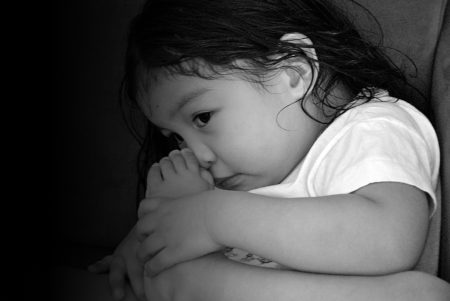 In orphanages or foster care, many children learn self-soothing behaviors such as rocking, head banging, or sucking their thumbs to comfort themselves. These behaviors are learned due to neglect, limited social interaction, and a lack of loving caregivers who consistently meet their needs. When raised in these environments, children learn how to take care of their own physical and emotional needs, but their self-soothing behaviors are not always safe or socially acceptable.
In orphanages or foster care, many children learn self-soothing behaviors such as rocking, head banging, or sucking their thumbs to comfort themselves. These behaviors are learned due to neglect, limited social interaction, and a lack of loving caregivers who consistently meet their needs. When raised in these environments, children learn how to take care of their own physical and emotional needs, but their self-soothing behaviors are not always safe or socially acceptable.
In a family environment, these behaviors are no longer necessary, but can be difficult to stop. They usually decrease over time, once the child feels safe and his needs are being met by their parents. Most of the time, these behaviors are harmless, do not interfere with a child’s quality of life or sleep, and go away on their own. However, some children continue these behaviors for months or even years after they’ve joined their family.
Some self-soothing can be dangerous, so it’s important to put safety measures in places to keep your child safe. For example, some children bang their head or rock to go to sleep at night. In this case, make sure to remove any headboards, move the bed away from the wall or strategically place pillows to prevent injuries. If your child still sleeps in a crib, a pack ‘n play may be a safer temporary option since they have mesh flexible sides instead of hard railings. Some children chew or suck on inedible objects (many times anything they can get their hands on) to self-soothe. In this case, provide opportunities to suck on or chew safe, non-toxic items such as gum, ice, chewelry (necklaces or bracelets designed for chewing,) or drink out of sippy cups or water bottles with straws like the Camelbak brand.
While your child is learning other ways to replace their self-soothing behaviors, there are a few ways to help your child transition and feel secure. First, help your child recognize their need behind the behavior by verbally acknowledging how they may be feeling. For example, say something like, “You must be feeling very lonely or sad right now.” Ask him how you can help him meet his need, then offer some suggestions that may provide comfort such as, “Would you like a hug, or we can sit in the rocking chair and rock together?” or “Can I get you some gum or a cup of ice to chew on?” or “Would you like to cuddle under a weighted blanket or squeeze a stress ball?” The replacement activity should involve the parent providing comfort to the child in some way, which in turn will strengthen attachment between the parent and child.
Many of these self-soothing behaviors are sensory-seeking. If your child is exhibiting behaviors such as excessive spinning, jumping, or crashing into things, or putting objects in his mouth, he may have Sensory Processing Disorder (SPD). According to the SPD Foundation, “Sensory Processing Disorder is a condition that exists when sensory signals don’t get organized into appropriate responses.” SPD may affect a child’s social skills, academic performance, spatial awareness, and motor development. It is common for children who come from hard places to struggle with sensory issues; in the video “Children From Hard Places and the Brain,” Dr. Karyn Purvis reports that 18 out of 20 of children from hard places have some level of SPD. Occupational therapy is one of the many primary treatments for SPD.
These behaviors may seem disturbing to some parents, but most of these behaviors lessen or completely go away once the child is in a loving and caring environment and his needs are being met by his parents. Every child is different, so there is no “one size fits all” answer for all situations. However, if the behavior does not diminish after several months or a year, or it becomes worse, then there may be an underlying disorder.
Photo Credit: Edward Musiak
